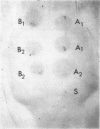Abstract
1. Extracts of the blood of monkeys (Macaca mulatta) infected with Plasmodium knowlesi contain histamine. A mean total concentration of 0·15 μg/ml was present in the circulating blood.
2. No histamine was detected in the blood of healthy monkeys.
3. Vasodilatation and increased vascular permeability was observed at the site of injection of the extract into the skin and brain of guinea-pigs.
4. Infiltration of the dermal layer by leucocytes was observed after intradermal injection of the histamine extract. A similar response was obtained in the brain.
5. The extract of the blood from the infected animal produced hypotension in rabbits when administered intravenously.
6. The pathophysiological significance of histamine in malaria is discussed.
Full text
PDF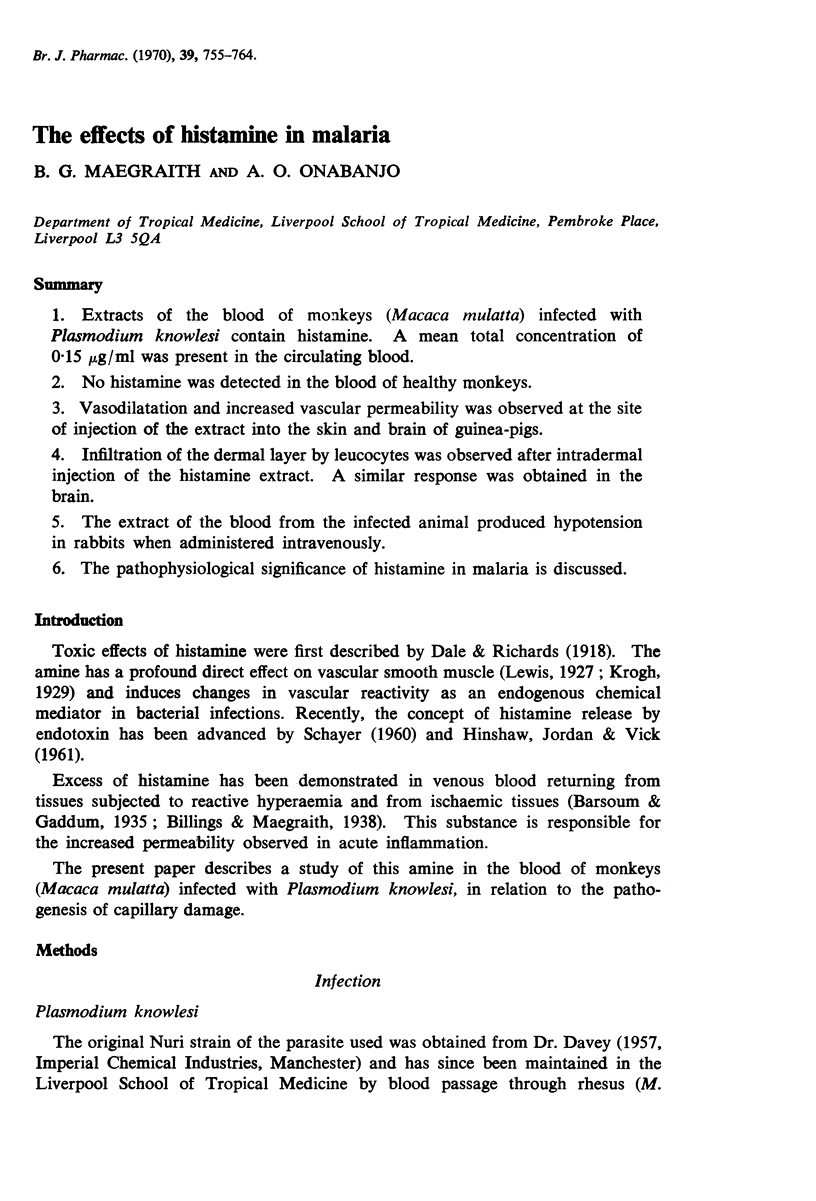
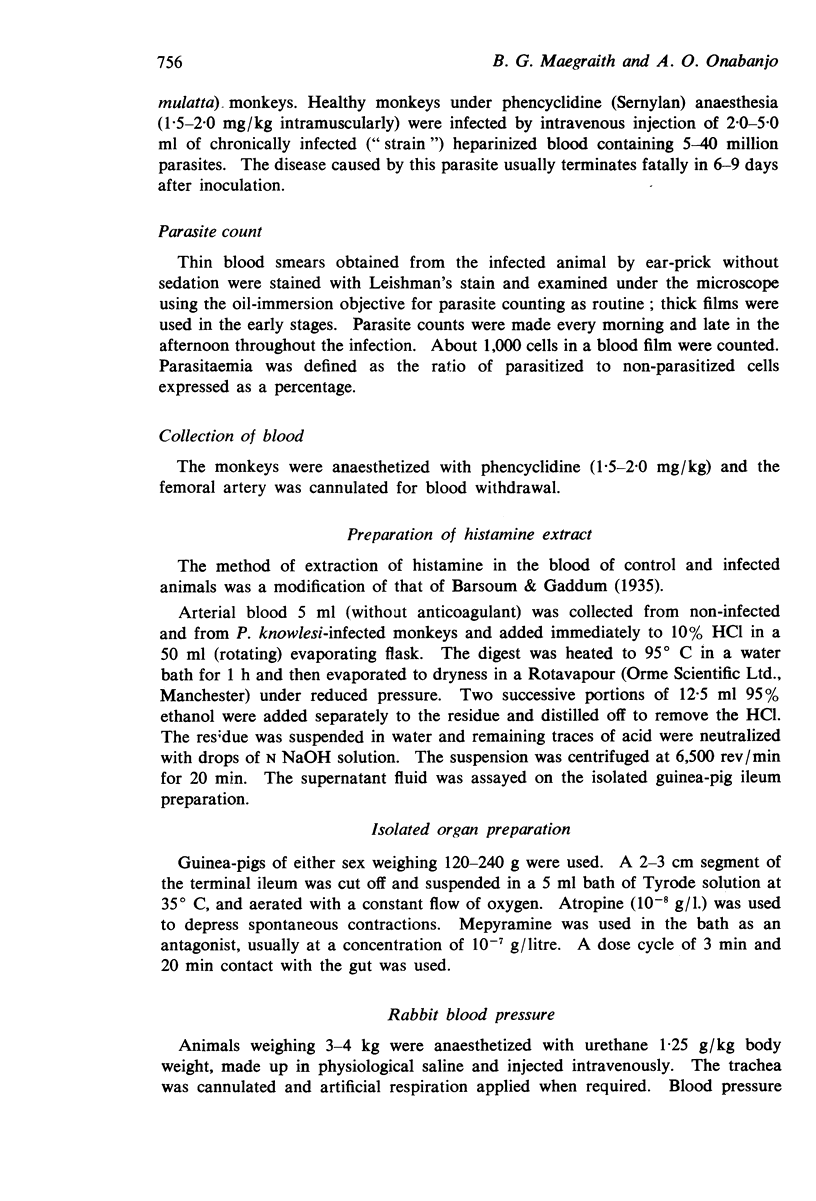

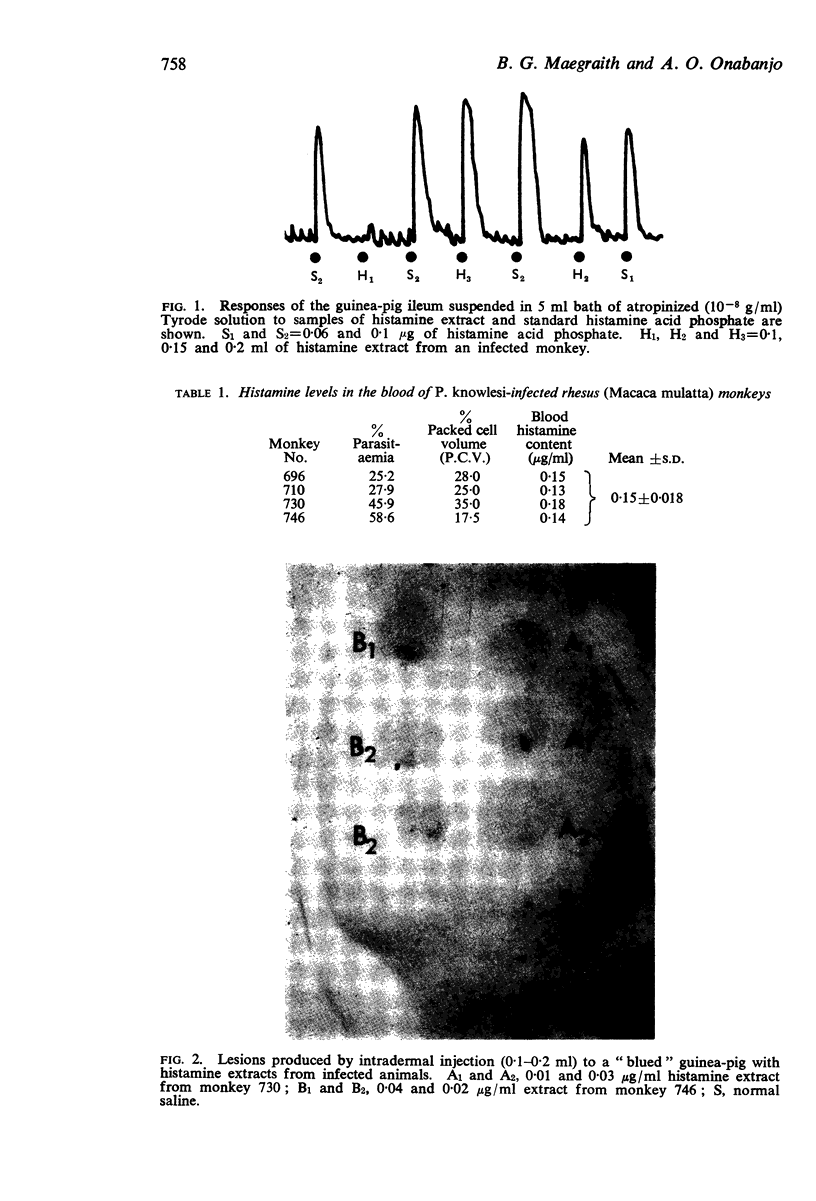
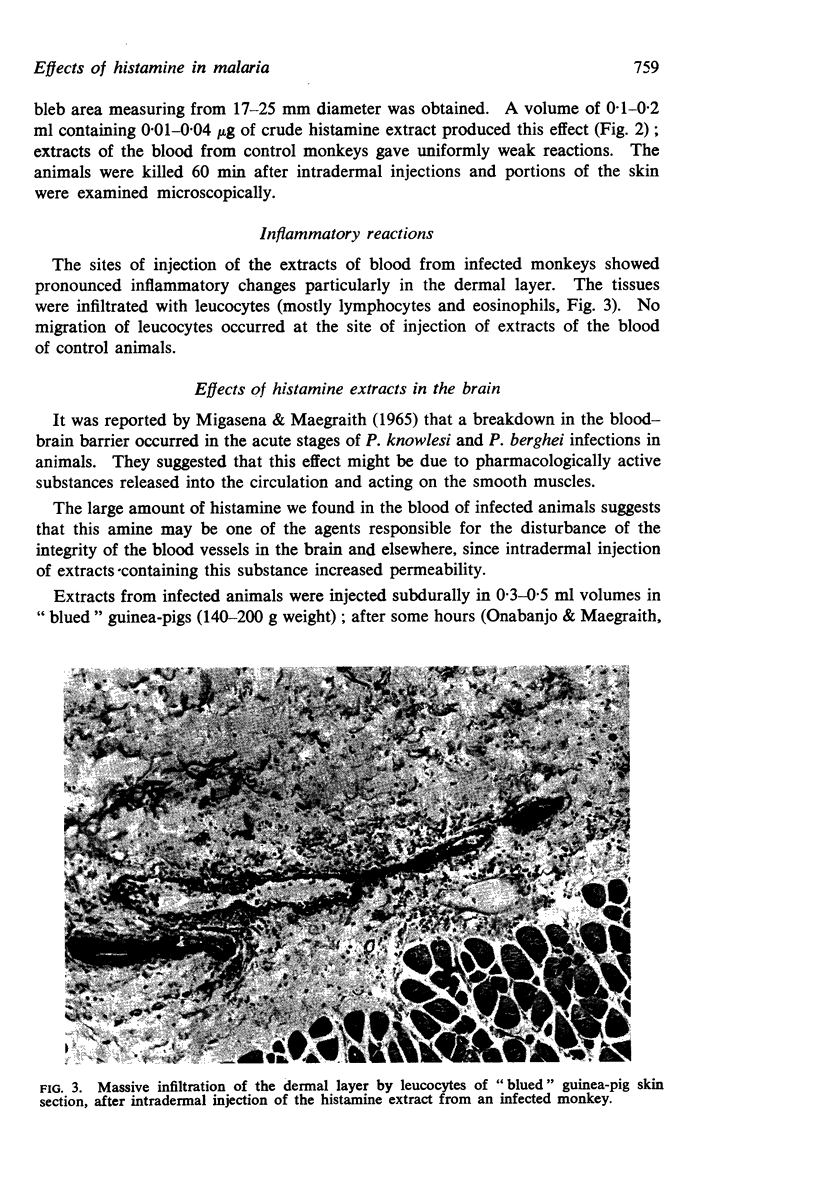
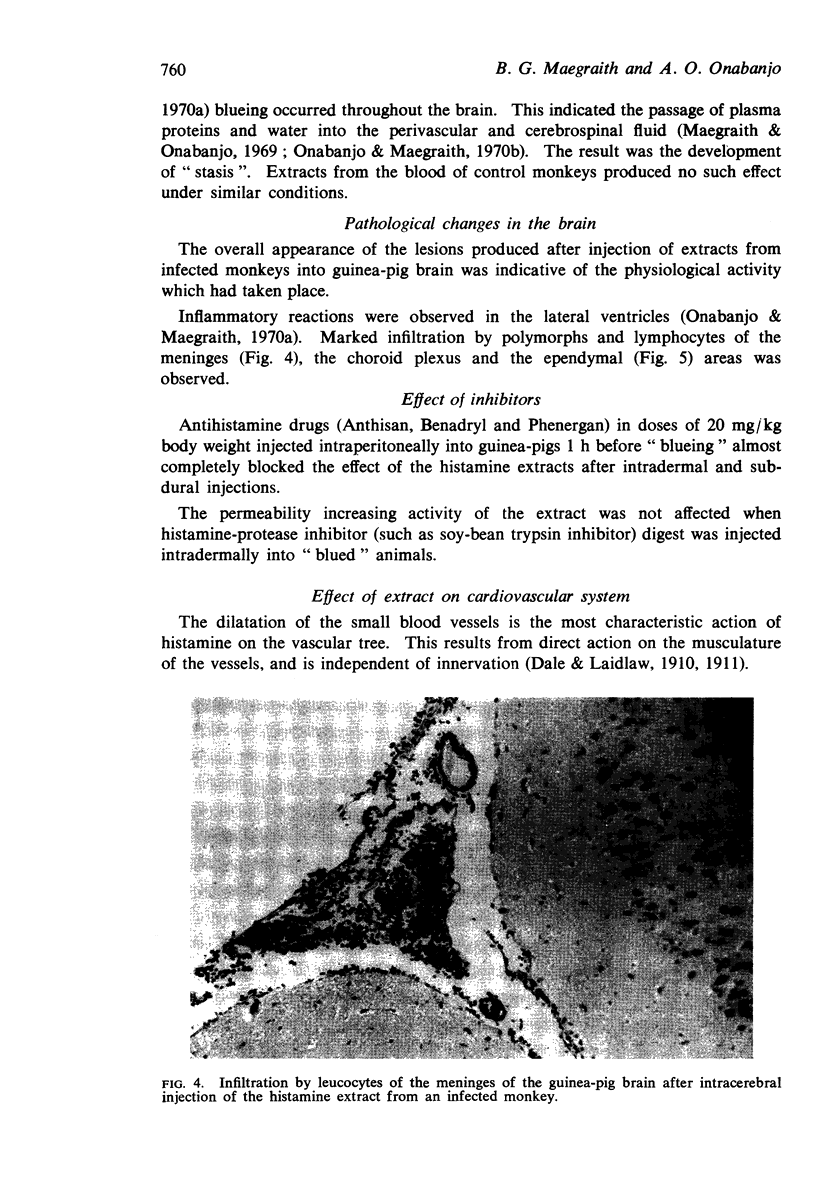
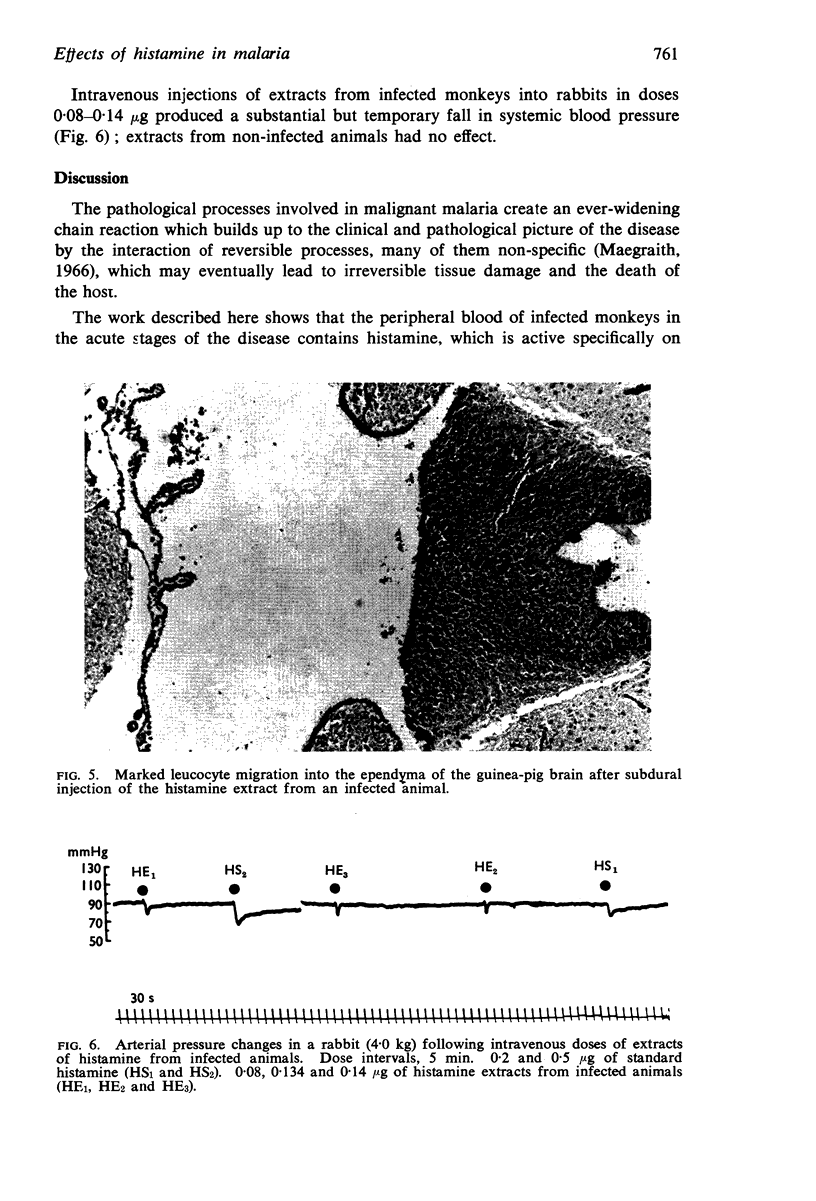
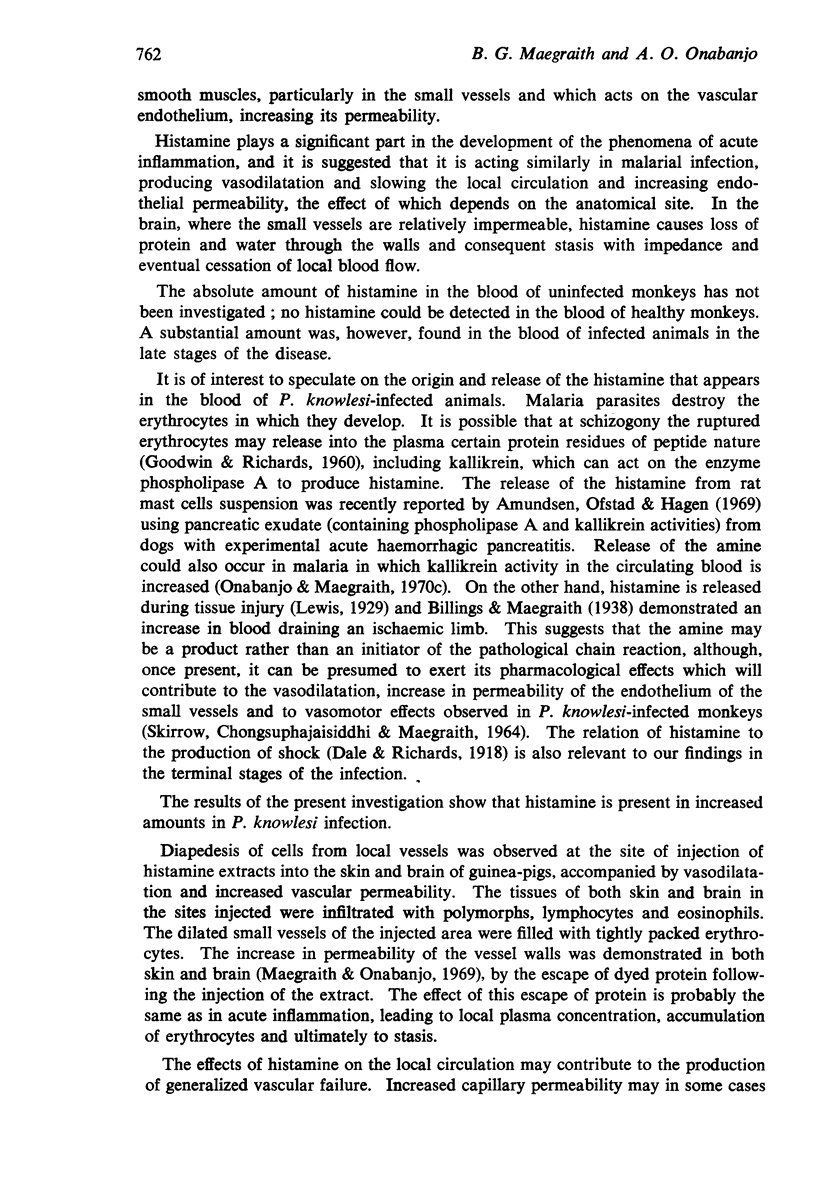
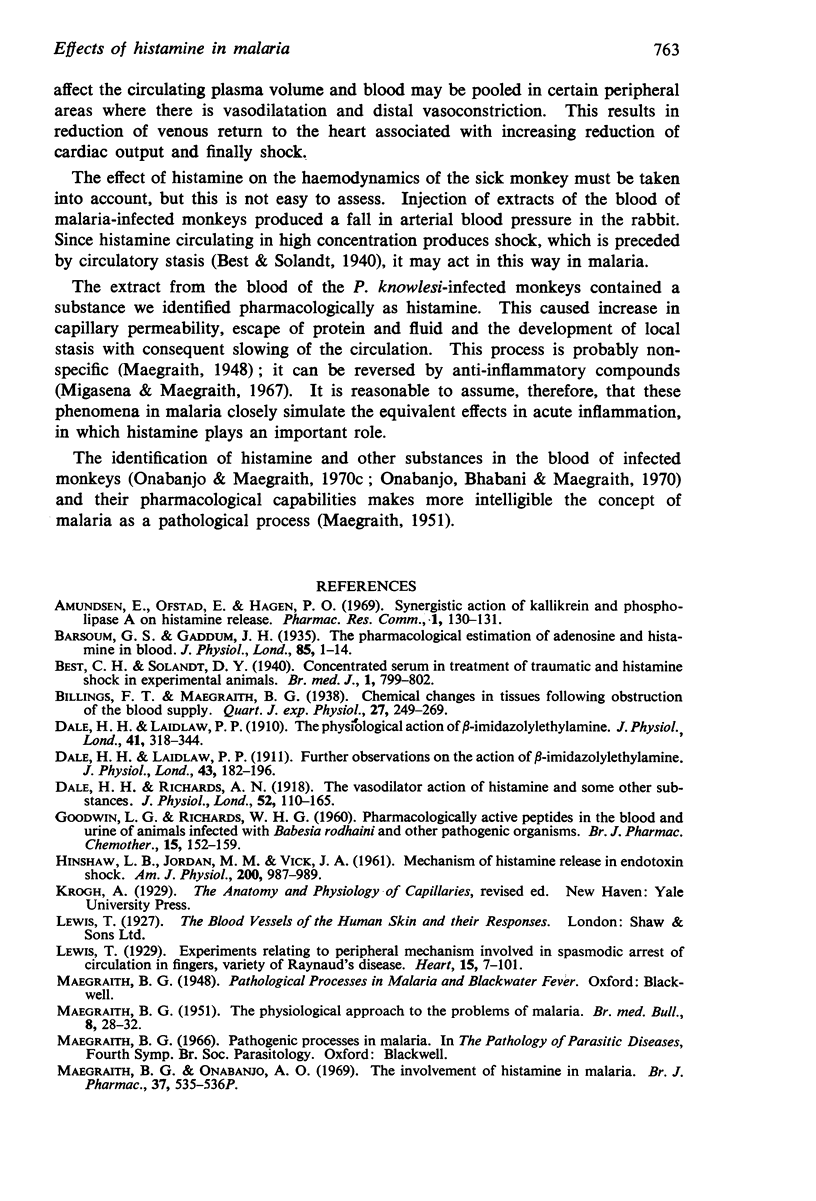

Images in this article
Selected References
These references are in PubMed. This may not be the complete list of references from this article.
- Barsoum G. S., Gaddum J. H. The pharmacological estimation of adenosine and histamine in blood. J Physiol. 1935 Aug 22;85(1):1–14. doi: 10.1113/jphysiol.1935.sp003298. [DOI] [PMC free article] [PubMed] [Google Scholar]
- Dale H. H., Laidlaw P. P. Further observations on the action of beta-iminazolylethylamine. J Physiol. 1911 Oct 20;43(2):182–195. doi: 10.1113/jphysiol.1911.sp001464. [DOI] [PMC free article] [PubMed] [Google Scholar]
- Dale H. H., Laidlaw P. P. The physiological action of beta-iminazolylethylamine. J Physiol. 1910 Dec 31;41(5):318–344. doi: 10.1113/jphysiol.1910.sp001406. [DOI] [PMC free article] [PubMed] [Google Scholar]
- Dale H. H., Richards A. N. The vasodilator action of histamine and of some other substances. J Physiol. 1918 Jul 10;52(2-3):110–165. doi: 10.1113/jphysiol.1918.sp001825. [DOI] [PMC free article] [PubMed] [Google Scholar]
- GOODWIN L. G., RICHARDS W. H. Pharmacologically active peptides in the blood and urine of animals infected with Babesia rodhaini and other pathogenic organisms. Br J Pharmacol Chemother. 1960 Mar;15:152–159. doi: 10.1111/j.1476-5381.1960.tb01224.x. [DOI] [PMC free article] [PubMed] [Google Scholar]
- HINSHAW L. B., JORDAN M. M., VICK J. A. Mechanism of histamine release in endotoxin shock. Am J Physiol. 1961 May;200:987–989. doi: 10.1152/ajplegacy.1961.200.5.987. [DOI] [PubMed] [Google Scholar]
- MAEGRAITH B. The physiological approach to the problems of malaria. Br Med Bull. 1951;8(1):28–32. doi: 10.1093/oxfordjournals.bmb.a074050. [DOI] [PubMed] [Google Scholar]
- Maegraith B. G., Onabanjo A. O. The involvement of histamine in malaria. Br J Pharmacol. 1969 Oct;37(2):535P–536P. [PMC free article] [PubMed] [Google Scholar]
- SCHAYER R. W. Relationship of induced histidine decarboxylase activity and histamine synthesis to shock from stress and from endotoxin. Am J Physiol. 1960 Jun;198:1187–1192. doi: 10.1152/ajplegacy.1960.198.6.1187. [DOI] [PubMed] [Google Scholar]
- SKIRROW M. B., CHONGSUPHAJAISIDDHI T., MAEGRAITH B. G. THE CIRCULATION IN MALARIA. II. PORTAL ANGIOGRAPHY IN MONKEYS (MACACA MULATTA) INFECTED WITH PLASMODIUM KNOWLESI AND IN SHOCK FOLLOWING MANIPULATION OF THE GUT. Ann Trop Med Parasitol. 1964 Dec;58:502–510. [PubMed] [Google Scholar]



